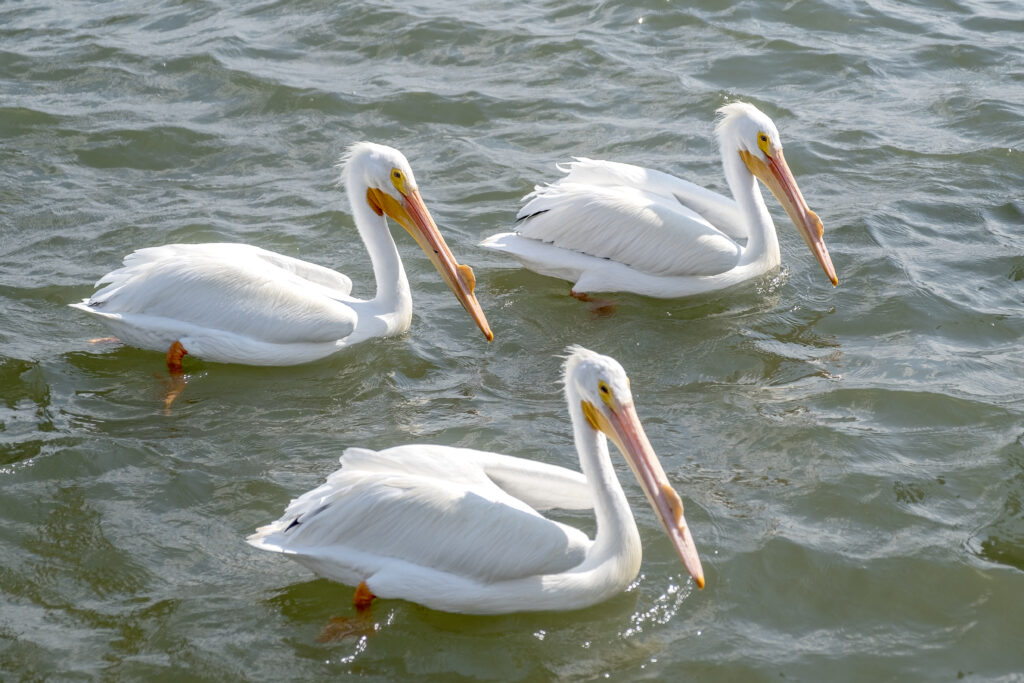Island residents celebrated the 121st birthday of Pelican Island National Wildlife Refuge last weekend with educational events at the headquarters on the North Barrier Island near Windsor, plus ticketed gatherings at the Environmental Learning Center on Orchid Island in Wabasso, but having the nation’s first wildlife refuge as the island’s backyard makes every day a special occasion for bird watchers.
Locals grow accustomed to spying Brown Pelicans near the refuge, but the less-common White Pelicans – the original snow birds – grace the shores of the Indian River Lagoon for just a short time each winter to delight residents and tourists alike.
Many of the island’s golf and tennis club communities such as Windsor have lakes and ponds that are home to both the Brown Pelicans and their white cousins, the species called Pelican erythrorthynchos of the New World, or the North American White Pelican.
An elegant, soaring bird in flight, the White Pelican holds its head close to, and aligned with its body. After a few slow, methodical wing beats followed by a glide, the Pelican’s flight is powerful; and the birds are often seen flying in spectacular groups of linear, circular or V-formation. The wingspan of the white Pelican is up to 10 feet, making it one of the largest flying birds in North America with a beak-to-tail measurement of 55 to 71 inches. They are among the heaviest flying birds in the world with a weight approaching 30 pounds.
Windsor resident Peggy Segalas has been admiring these noble birds since she arrived in the area 26 years ago. ”I am actually amazed at the grace and dexterity of the White Pelicans as they herd the fish, their food, around in the little ponds. And they are so beautiful in the air. We are really lucky that the white Pelicans come to Windsor!” she said.
The bird is mostly silent, with a variety of low-pitched, lowing, grunting and growling calls.
The flight call is a deep quiet croak; at breeding colonies it gives out deep moo calls. Young pelicans at the colony are more vocal with loud squawks and food begging calls.
They often travel long distances in large flocks by soaring, sometimes to find food. White Pelicans eat fish which they catch by using their throat pouch as a dip-net or a scoop.
Usually, the birds feed early in the morning, needing two to three pounds of fish every day while putting on quite a show.
The actual “Pelican Island” is a three-acre island, augmented by 2.5 acres of surrounding water off the east coast of Vero Beach’s Indian River Lagoon.
Photos by Joshua Kodis

